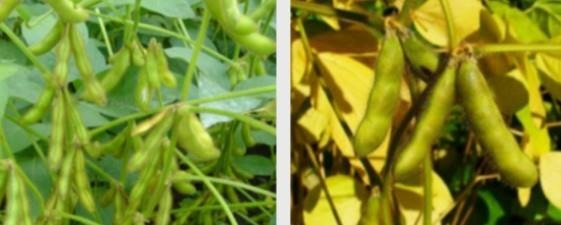
Figure 2. Soybean plants to ensile (left) and too mature (right).
Moisture Content
Direct-cut soybeans may have moisture contents between 70 and 88%. Ensiling at this moisture will result in higher effluent losses and a greater risk of undesirable fermentation (butyric). It is better to aim for 60-65% moisture. Less moisture than recommended will lead to difficulty in packing, air infiltration, and heating. In addition, the buffering capacity of the crop is relatively high which might hinder fermentation. Inoculants can help reduce these problems and inhibit mold growth.
Nutrient Content
The nutrient content of soybean silage can be greater than most other forages, such as corn silage and small grain silages. Dry matter digestibility can be up to 77%, with NDF digestibility up to 47.8% making this silage a forage with overall good digestibility. Soybean silage can also be a good source of minerals such as calcium and phosphorus (Table 1). It averages approximately 19% CP, with a soluble protein concentration that varies depending on the moisture concentration. Harvesting at earlier maturities increases CP concentrations, depending on the stage of development of the plants. Its fiber (NDF, ADF, and lignin; Table 1) and non-fiber carbohydrate (NFC) concentrations vary depending on the maturity at which the crop was harvested. As a result, soybean silage can range from being a moderate fiber, high NFC to a high fiber, low NFC feedstuff. Fat concentration ranges from 2.3 to 6.6%, depending upon the stage of maturity of the soybean in the pods. Given the ranges in quality that could be expected based on the maturity of the soybean plants, a sample should be submitted to the laboratory for nutrient content and digestibility analyses.
Table 1. Nutrient composition of soybean silage.
| | Range |
| Crude protein, % | 16.0 - 20.6 |
| Neutral detergent fiber, % | 38.3 - 48.3 |
| Acid detergent fiber, % | 27.3 - 37.3 |
| Acid detergent lignin | 6.0 - 7.4 |
| Calcium, % | 1.36 - 1.49 |
| Phosphorus, % | 0.26 - 0.31 |
Two varieties averaged over two years. Adapted from Coffey et. al. 1995. ARPAS 11:74
Herbicide Restrictions
Always verify herbicide restrictions when using soybeans for forage (Table 2). Soybean silage can be ensiled very easily and a good silage inoculant is recommended to aid in the ensiling process. Lactic acid concentrations can range from low to high, and adequate pH values can be attained to ensure long term storage. In addition, the concentrations of lactic and acetic acids, along with a low pH, ensure soybean silage will be very stable during feed out in the feed bunk. Soybeans can be easily ensiled as a high-quality forage.
Click here to see more...